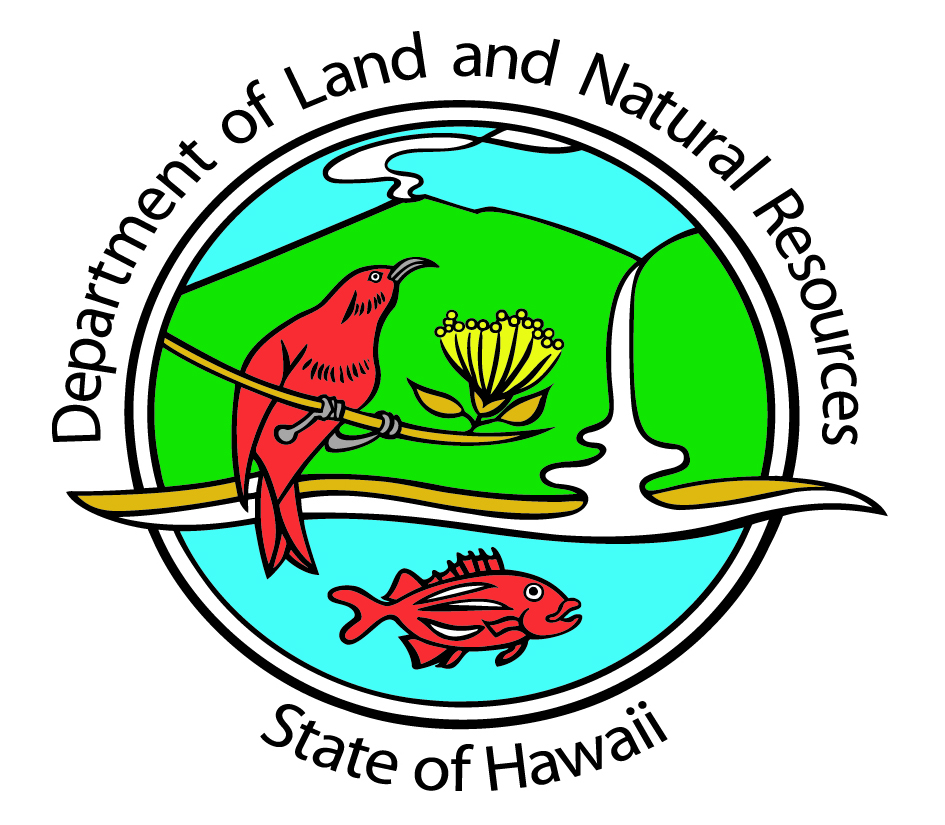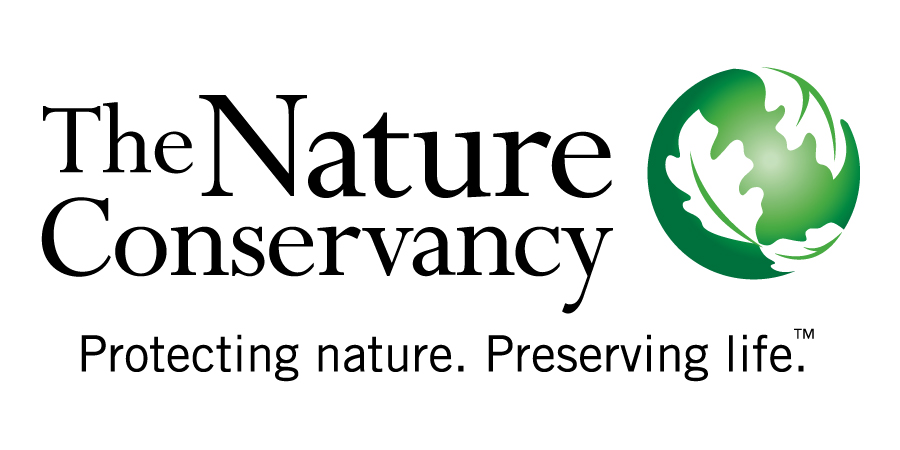Plant Threats
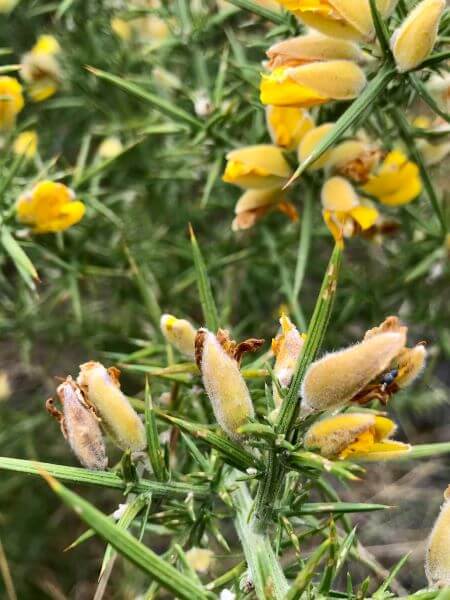
Non-Native (arrived with the help of humans) Invasive plants have a variety of impacts to Hawaii’s natural ecosystem
- Strongest contributor to physical displacement of other native plant species by methods of:
- Depriving other plants of valuable nutrients, particularly nitrogen
- Forming monotypic stands (single-species) replacing a diverse eco-system and shading out young new growth
- Change fire characteristics with the introduction of fire adapted grasses
- Not synchronized to Hawaii’s climate as to the release and storage of water
- Shown to have a direct beneficial relationship to alien plants and alien animals
Hawaii’s Native Plants have adapted over thousands of years to live harmoniously in this unique special place!
Examples of Non-Native Invasive plants:
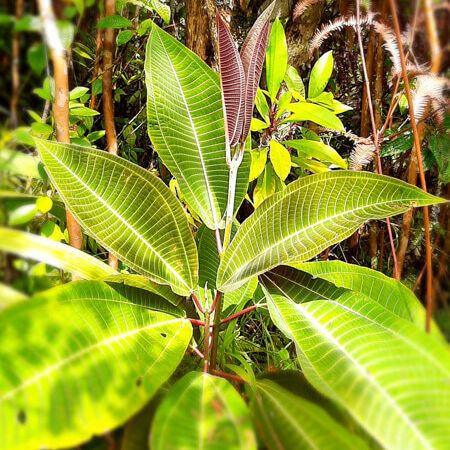
Miconia
Miconia is a fast-growing weedy tree from South America that is now invading Hawaiʻi. It has large, dark green leaves with purple undersides. It looks like a bush when young, but can grow up to 50 feet tall. A single Miconia plant produces millions of tiny seeds that spread quickly and have a long germination rate. It has already destroyed 70% of the forest growth in Tahiti.
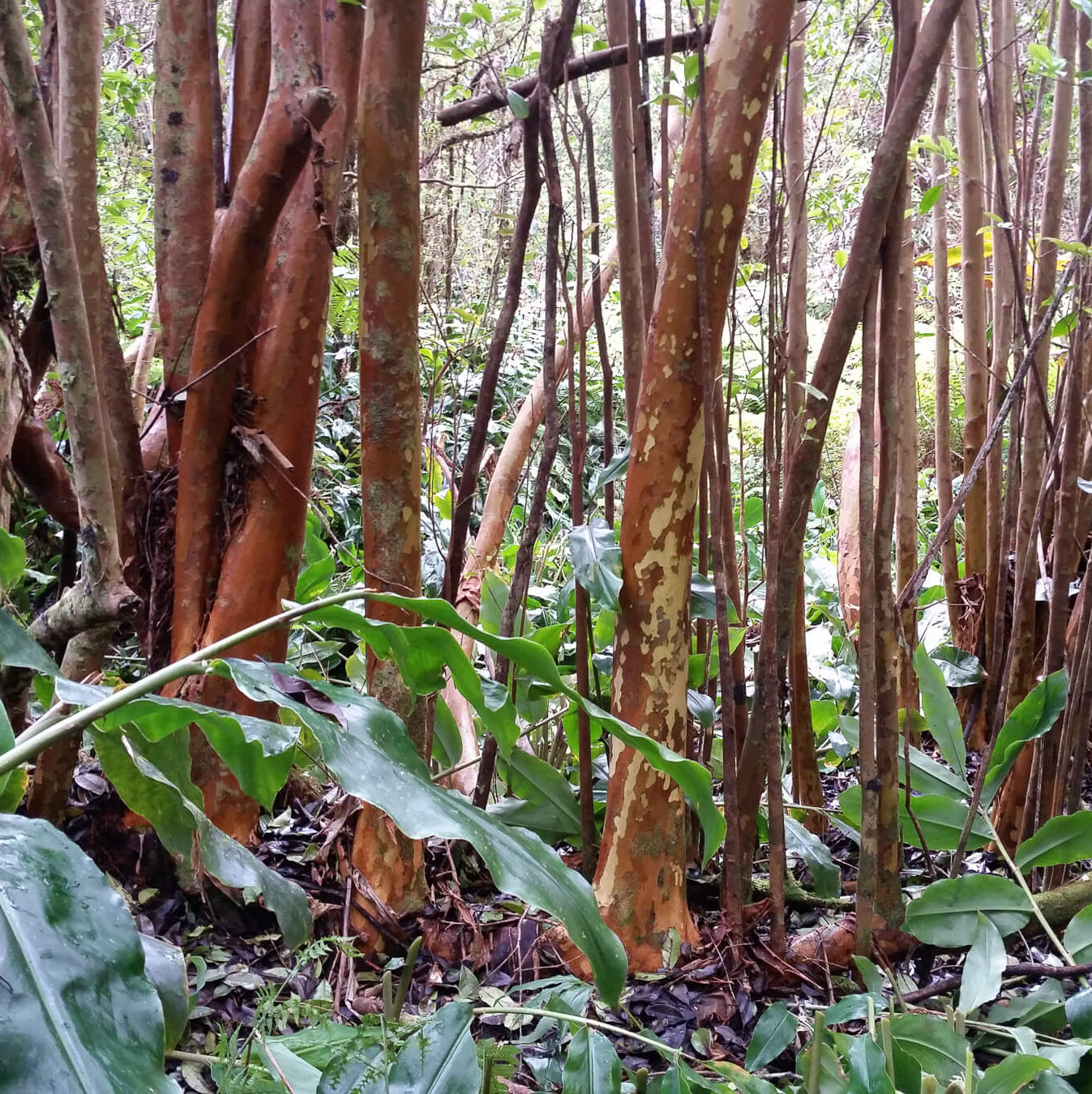
Strawberry Guava
This rapidly growing tree forms monotypic (single-species) stands replacing diverse native ecosystems. It creates shade so deep that few native seedlings can survive. Spread mostly by feral pigs and introduced birds which eat it’s fruit it is unlikely native plant communities will return to areas dominated by this tree. Compared to a diverse native forest, strawberry guava invaded forests send one third less water to our aquifers directly reducing our freshwater supply. The fruits harbor fruit flies which are major pest to our Hawaiian agriculture.
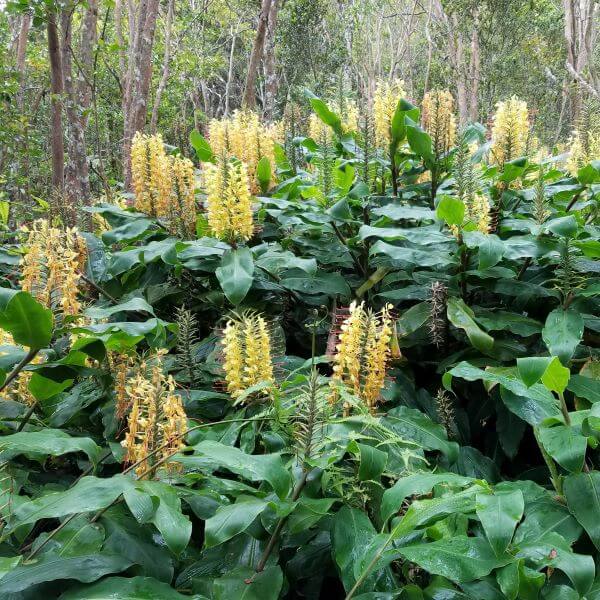
Ginger
Himalayan ginger poses a devastating and irreversible habitat modifying threat to the high elevation forests of East Maui. It displaces native mosses, ferns, and shrubs and small trees that form the understory of the Hawaiian forest. Equally harmful, its sprawling, dense roots prevent rainfall from percolating into the water table thus diminishing the forest’s critical roll and function as a watershed.

Gorse
Gorse is one of the most noxious and invasive weed species in Hawaiʻi. This spiny, perennial shrub forms tall dense stands which shade out surrounding vegetation and displace native plants by out competing them. Its impenetrable thickets also create a fire hazard due to its abundant dead material and oily, highly flammable foliage and seeds
